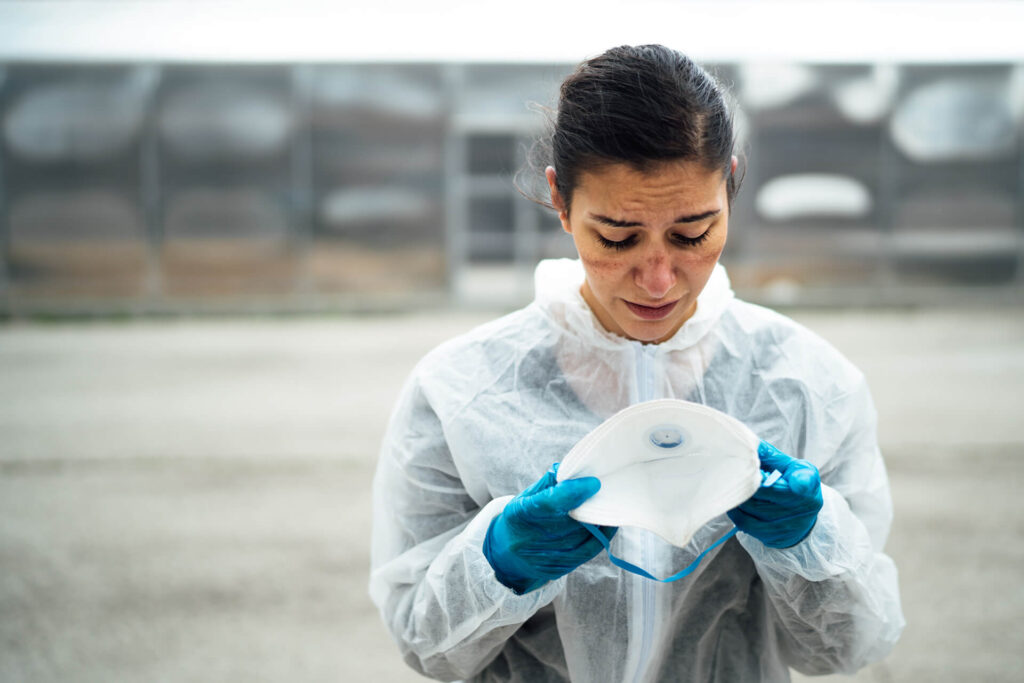We tend to overestimate what we can do on short-term scales, but massively underestimate what we can do on longer time scales…
— Richard O’Bousy, physicist
Nothing vast enters the life [span] of mortals without a curse.
— Sophocles
Is there a limit to the human lifespan? In 2023, the simple answer is yes. However, a more nuanced response, considering advances in medicine, bioengineering, related technologies, definitions and quality of human lifespan, appears to be unknown — though perhaps not.
It seems that humans are living longer. Let’s examine some facts, broadly discussed in an excellent article by Ferris Jabr in The New York Times Magazine back in May 2021:
— The French woman Jeanne Louise Calment, who died in 1997 at
the age of 122, was the oldest documented human. Others,
including Sarah Knauss (US) and Kane Tanaka (Japan), died at
119. Interesting that these super-centenarians were all women —
one might (incorrectly) guess that it had something to do with
fewer moving parts! (In truth, women tend to have healthier
hearts, stronger immune systems and smaller bodies than men.
They also avoid some genetic diseases linked to the Y
chromosome.)
— The UN reported 95,000 centenarians globally in 1990, 450,000 in
2015 and projected 25,000,000 by 2100. The number of
supercentenarians (>110 years) in Japan rose from 22 in 2005 to
146 in 2015. The conclusion is that a group of humans is living
longer, though not so far exceeding the record set by Calment.
If this is the case, the next question to ask is, “How far can we go?”
Why do humans only live as long as they do?
Human death and frailty increase exponentially with age — a blinding statement of the obvious no doubt, but with caveats including mortality plateaus for some.
Some complex organisms, such as the Greenland shark, live several hundred years. Simpler organisms, including some nematodes, jellyfish and certain plants, can live even longer, depending on the definition of “life” as discrete organisms.
Simple organisms, such as the nematode C. elegans daurer, were revived briefly in 2023 after ~46,000 years in the Siberian permafrost, based on radiocarbon dating. Known as cryptobiosis, this suspended animation could open intriguing scientific doors regarding biological aging.
On a more basic level, there is no theoretical limit to how many times cells can reproduce themselves. Some cancer cells are defined as “immortal,” like HeLa cells. This is a line of human cells used throughout the world for scientific research; they have been reproducing indefinitely since they were derived from the cervical tumor of Henrietta Lacks, who died in 1951.
The purpose of life appears to be to reproduce (successfully). In complex organisms, this ability fades. In humans, women experience menopause. (Men can reproduce in older age, but a typical man is not going to be able to reproduce with the women available to him, so the evolutionary effect is the same.) When this happens, biological maintenance becomes a greater cost than the biological imperative to grow and reproduce, and the organism subsequently dies, to be replaced by the next generation.
To date, there appears to be no central “genetic clock” governing aging in humans. Rather, progressive aging seems more linked to a multitude of single and multi-point failures in critical organs including hearts, brains, lungs, livers, kidneys, pancreas, cells, etc. Taken together, each with its own probability of failure over time, it is hardly surprising, when grouped statistically, that the probability of death increases over a finite period (e.g., the biblical “threescore years and ten”).
With all of the possible points of failure in such a complex system as the human body, it is hardly surprising human life span “banks out” in the low to mid-eighty years, having increased only modestly in the modern period, largely due to modern medicine & care facilities. Sooner or later, something will fail. As Elizabeth Taylor quipped, “Just about the time you get your head together, your ass goes to hell.”
Can we make our cells last forever?
Modern biology has discovered that there is more to aging than failure on the system or organ level. Our cells themselves wear out.
Cellular senescence, the slowing down and halting of cellular division, is currently an area of active scientific research. Professor Leonard Hayflick discovered cellular senescence in 1961. This resulted in the “Hayflick limit” where human cells cease dividing after ~50 population doublings. Previously, it had been believed that human cells were essentially immortal; now, it is believed that cells can only divide without limit under certain extraordinary conditions (as with HeLa cells).
Experimental drugs, dubbed “senolytics,” are being developed to clear senescent and “zombie-like” cells. Medical research centers, including the Mayo Clinic, have active research projects. Around 11,500 projects involving cellular senescence since 1985 have been recorded, according to an AP analysis of the National Institutes of Health database).
A Mayo Clinic study in 2021 revealed for the first time that exercise can reduce indicators in the bloodstream of problematic senescent cells. According to Mayo Clinic’s Nathan LeBrasseur, “The ability to understand aging – and the potential to intervene in the fundamental biology of aging – is truly the greatest opportunity we have had, maybe in history, to transform human health … quality of life, public health, socioeconomics, the whole shebang.”
Practical steps to slow aging
As exciting as almost sci-fi-level anti-aging drugs can sound, most of us will not want to wait that long. There are steps that we can take here and now to prolong our lifespans.
As interviewed in The New York Times by Hilary Achauer, August 13, 2022, according to Dr. Jonathan Myers of Stanford University Veterans Affairs Palo Alto Health Care System, “With age, strength and balance tend to decrease and that can result in frailty. Frailty is a really big thing now that the population is aging.”
Quoted in the same article, Dr. Lewis Lipsitz, a Harvard University professor and director of the Marcus Institute for Aging Research at Hebrew Senior Life, stated, “There’s a downward spiral of the people who don’t go out, who don’t walk, who don’t exercise, who don’t do balancing training, and they become weaker and weaker. And muscle weakness is another important risk factor for falls.”
Various researchers connected balance and strength with mortality — finding that an ability to rise from the floor to a standing position, balance on one leg for 30 seconds with one eye closed (without falling flat on one’s face) and walk at a brisk pace are tied to longevity.
So, the best thing that you can do right now to achieve a longer lifespan is to start exercising body and mind. In general, the longer you stay healthy, the longer you will live.
Where does this leave us humans?
So, that is where human longevity stands at the moment. But what will happen to our lifespans in the future? It is a truism to say that one cannot predict the future, but wouldn’t we all like to know?
In an ever-evolving environment like that of human longevity, it is a fool’s errand to try to make definitive pronouncements. However, by using scenario analysis, a method of producing mathematical models to predict future outcomes, we can arrive, not at predictions, but at least at some probable scenarios. While we do not have a science for predicting the future, like the fictional science of psychohistory from Isaac Asimov’s Foundation novels, scenario analysis is a real-life discipline that enables us to prepare for future events:
— Scenario analysis was used by Shell Oil to anticipate oil shocks 1973 and 1979.
— It was also used by IVA LTD. where I was CEO, to successfully derive the most probable outcome of the 1982 break-up of AT&T.
— I used Scenario Analysis to evaluate the Shakespeare authorship issue, the results of which I presented in 2016 at the Cosmos Club in Washington, DC.
In order to perform a scenario analysis of human longevity, we need first to evaluate the relevant factors or forces involved. “Forces” in this context can be divided into four: predetermined, constant, dependent and independent. Allow me to explain by way of example.
Predetermined forces are often the most obvious ones. In this case, they include human genetic and evolutionary changes.
Constant forces would be things like wear and tear, organ life cycles, weakening of the immune system with aging, frailty, advances in hygiene, etc
Dependent forces affecting human longevity would include technical advances in medicine such as disease eradication and organ replacement.
Independent forces, which are the hardest to predict, can be things like bombardment by another giant asteroid, synchronized super volcano eruptions or nuclear armageddon. These are possibilities that we are aware of; beyond these known unknowns, there are unknown unknowns (to use Donald Rumsfeld’s phrase) that could each transform or obliterate humans, perhaps leading to the next evolutionary cycle beyond mammals. Less dramatic, perhaps, but no less powerful are possible breakthroughs in bioengineering, the fusion of cyber technology with human genetics, rebooting the human immune system and brain, unanticipated approaches to extend quality of life with aging, dealing with cognitive and physical frailty deterioration, and perhaps as interesting, changing human’s perception of time.
That last factor is a discipline that recognizes the perception of time as relative, and therefore capable of being stretched or contracted. This requires a rethinking of the concept of time and how individuals can pack more (or fewer) experiences into the physical time available, by “lucid time thinking.” For more on this, see my August 2023 contribution to Fair Observer.
Identifying and weighing these factors allows us to piece together some plausible scenarios for the future. Though in no order, listed below are four scenarios for human longevity to the next century:
- Average human lifespan continues to increase beyond 73 years. The longest surviving human remains a statistical outlier at <130 years through 2100. Centenarians continue to increase globally to ~25M by 2100. Quality of life continues to improve for the elderly, especially in developed economies. GDPs in all countries reflect a higher percentage share allocated to improving health care. However, the maldistribution in longevity between rich and poor nations continues, though significant average longevity improvements in Africa continue due to improved health care.
- Breakthroughs in bioengineering, genetical intervention, cyber-biology integration, disease control (including malaria, Covid, etc.) extend the global number of centenarians above 25M by 2100 and more radically beyond 2100. The number of outliers above 122 years increases. Improvements in quality of life continue for those 70+ globally, especially in developed economies.
- Costs to maintain the health of aging populations place increasing constraints on resources and money available, resulting in a slowdown in both quality and expanded length of human lifespans.
- Unexpected, unanticipated events, such as diseases, environmental hazards, etc. cause average human lifespan to stall — or even decline (as it did in the U.S. from Covid and other medical factors 2020–2023).
It is not clear which one of these, or other, scenarios have the highest probability of occurring through 2100. The author’s educated guess is that scenario #2, or some combination, has a greater than 50% chance of occurring — though #4 remains a wildcard scenario with relatively low (<25%) probability.
So where does this leave us vis-à-vis immortality? Is it physically possible? Yes; there is no physical law preventing a biological organism from regenerating itself and perpetuating its existence indefinitely. But is it medically, scientifically or practically possible? I wouldn’t hold my breath, yet. With luck, however, the generations to come will be living longer than the generations behind us.
For now, I will follow the developments in science with interest and with hope, but I will not be counting on any miracle drug to keep me around just yet. The best that I can do is live healthily, both in body and in mind. And the mind is not something to discount. Since time spent on Earth is relative, rather than simply chronological, the Zen practice of living and participating in the moment — rather than the past or future, can help expand that precious commodity of useful time spent in good health.
[Jennifer Wider and Anton Schauble edited this piece.]
The views expressed in this article are the author’s own and do not necessarily reflect Fair Observer’s editorial policy.
Support Fair Observer
We rely on your support for our independence, diversity and quality.
For more than 10 years, Fair Observer has been free, fair and independent. No billionaire owns us, no advertisers control us. We are a reader-supported nonprofit. Unlike many other publications, we keep our content free for readers regardless of where they live or whether they can afford to pay. We have no paywalls and no ads.
In the post-truth era of fake news, echo chambers and filter bubbles, we publish a plurality of perspectives from around the world. Anyone can publish with us, but everyone goes through a rigorous editorial process. So, you get fact-checked, well-reasoned content instead of noise.
We publish 2,500+ voices from 90+ countries. We also conduct education and training programs
on subjects ranging from digital media and journalism to writing and critical thinking. This
doesn’t come cheap. Servers, editors, trainers and web developers cost
money.
Please consider supporting us on a regular basis as a recurring donor or a
sustaining member.
Will you support FO’s journalism?
We rely on your support for our independence, diversity and quality.







Comment